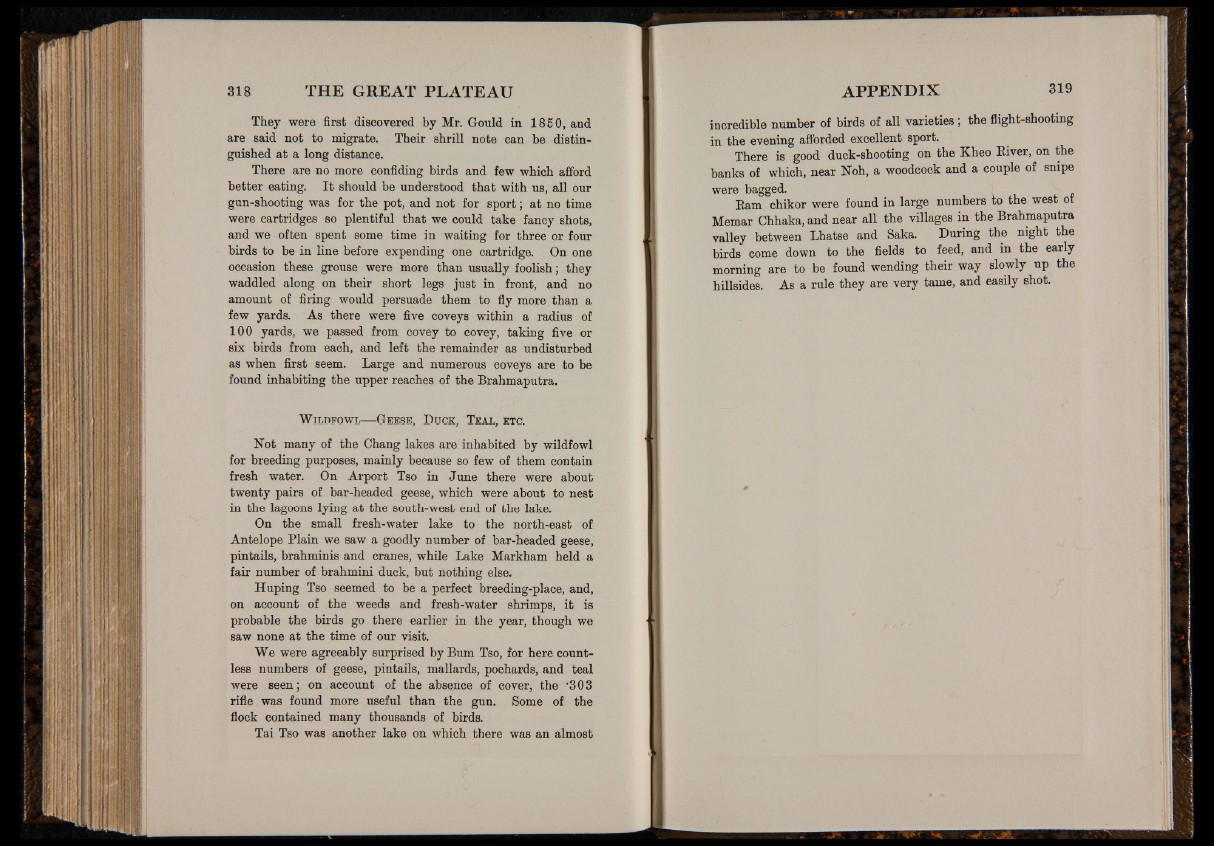
They were first discovered by Mr. Gould in 1850, and
are said not to migrate. Their shrill note can be distinguished
at a long distance.
There are no more confiding birds and few which afford
better eating. It should be understood that with us, all our
gun-shooting was for the pot, and not for sport; at no time
were cartridges so plentiful that we could take fancy shots,
and we often spent some time in waiting for three or four
birds to be in line before expending one cartridge. On one
occasion these grouse were more than usually foolish; they
waddled along on their short legs just in front, and no
amount of firing would persuade them to fly more than a
few yards. As there were five coveys within a radius of
100 yards, we passed from covey to covey, taking five or
six birds from each, and left the remainder as undisturbed
as when first seem. Large and numerous coveys are to be
found inhabiting the upper reaches of the Brahmaputra.
Wildfowl— Geese, D uck, Teal, etc.
Not many of the Chang lakes are inhabited by wildfowl
for breeding purposes, mainly because so few of them contain
fresh water. On Arport Tso in June there were about
twenty pairs of bar-headed geese, which were about to nest
in the lagoons lying at the south-west end of the lake.
On the small fresh-water lake to the north-east of
Antelope Plain we saw a goodly number of bar-headed geese,
pintails, brahminis and cranes, while Lake Markham held a
fair number of brahmini duck, but nothing else.
Huping Tso seemed to be a perfect breeding-place, and,
on account of the weeds and fresh-water shrimps, it is
probable the birds go there earlier in the year, though we
saw none at the time of our visit.
We were agreeably surprised by Bum Tso, for here countless
numbers of geese, pintails, mallards, pochards, and teal
were seen; on account of the absence of cover, the ‘303
rifle was found more useful than the gun. Some of the
flock contained many thousands of birds.
Tai Tso was another lake on which there was an almost
incredible number of birds of all varieties ; the flight-shooting
in the evening afforded excellent sport.
There is good duck-shooting on the Kheo River, on the
banks of which, near Noh, a woodcock and a couple of snipe
were bagged. .
Ram chikor were found in large numbers to the west ot
Memar Chhaka, and near all the villages in the Brahmaputra
valley between Lhatse and Saka. During the night the
birds come down to the fields to feed, and in the early
morning are to be found wending their way slowly up the
hillsides. As a rule they are very tame, and easily shot.